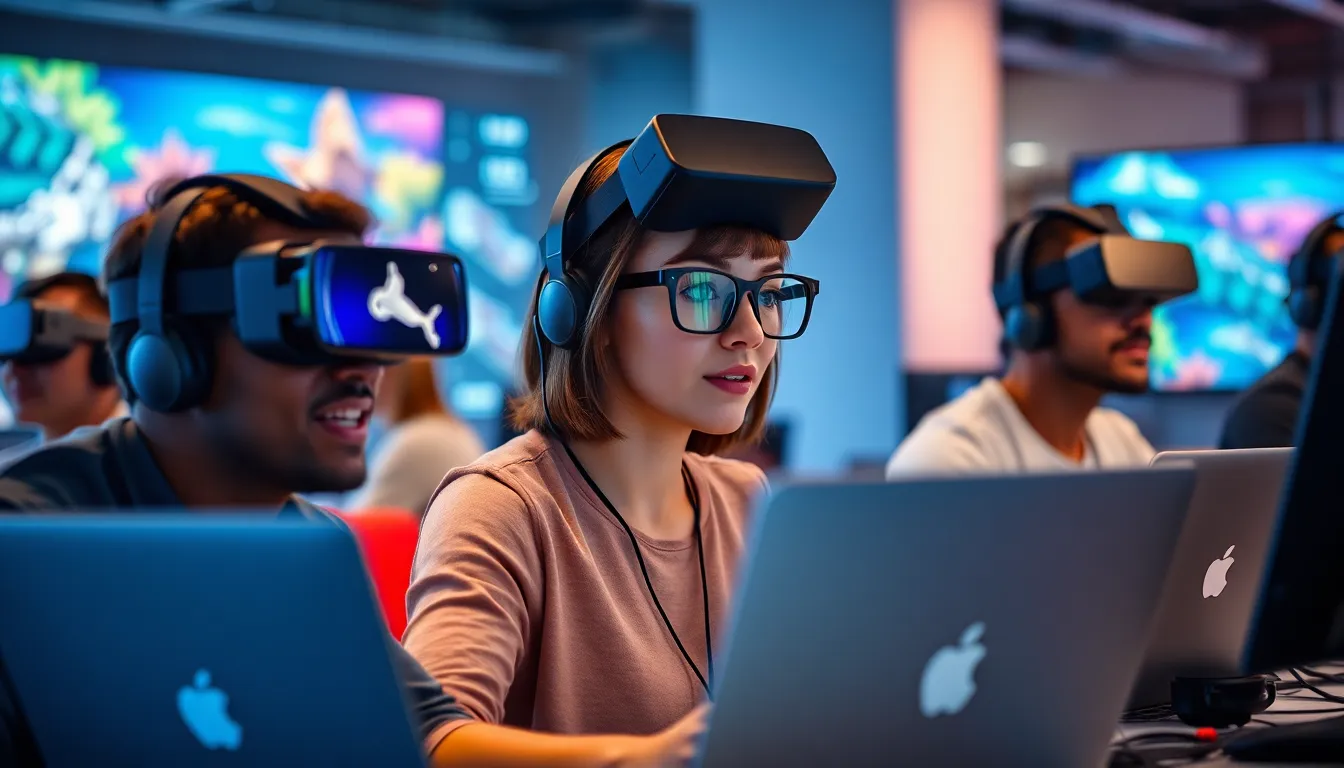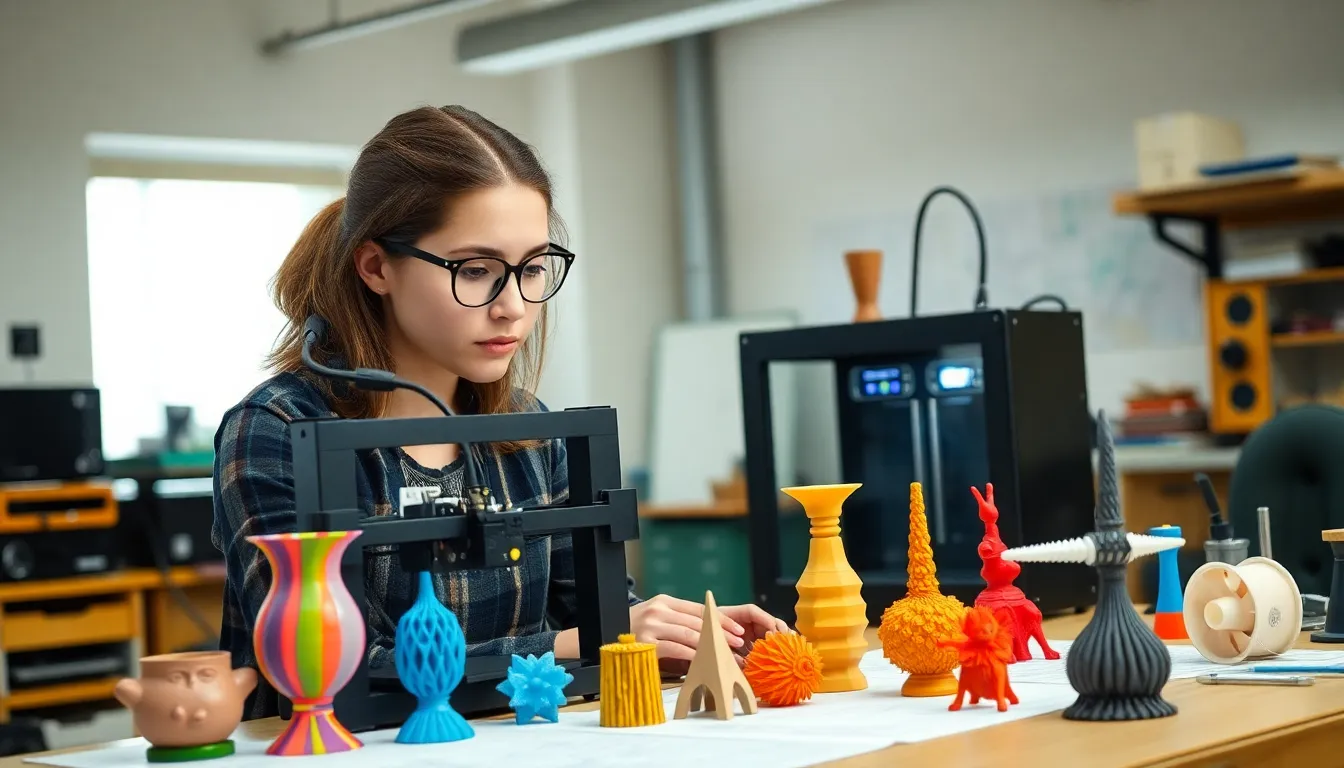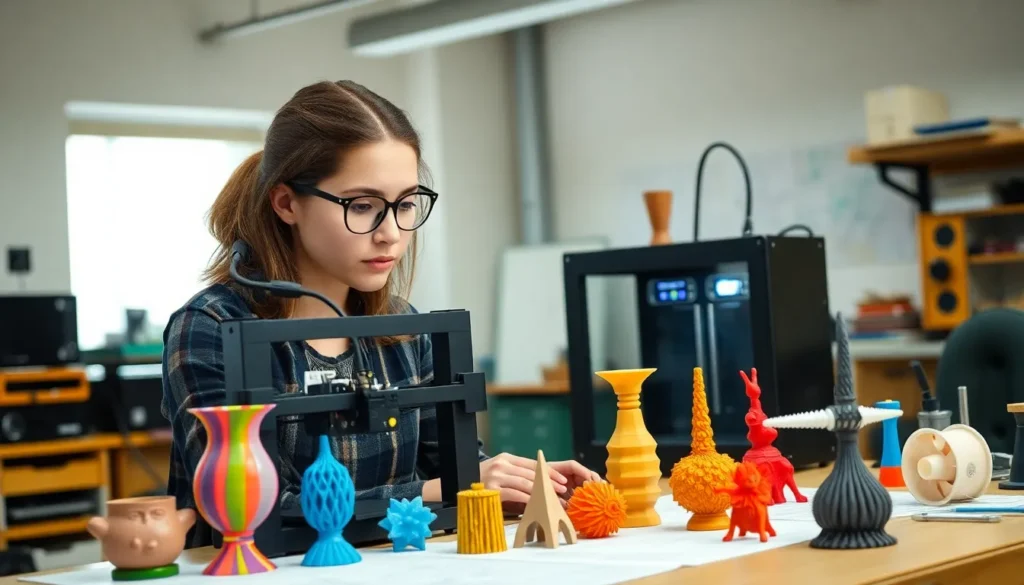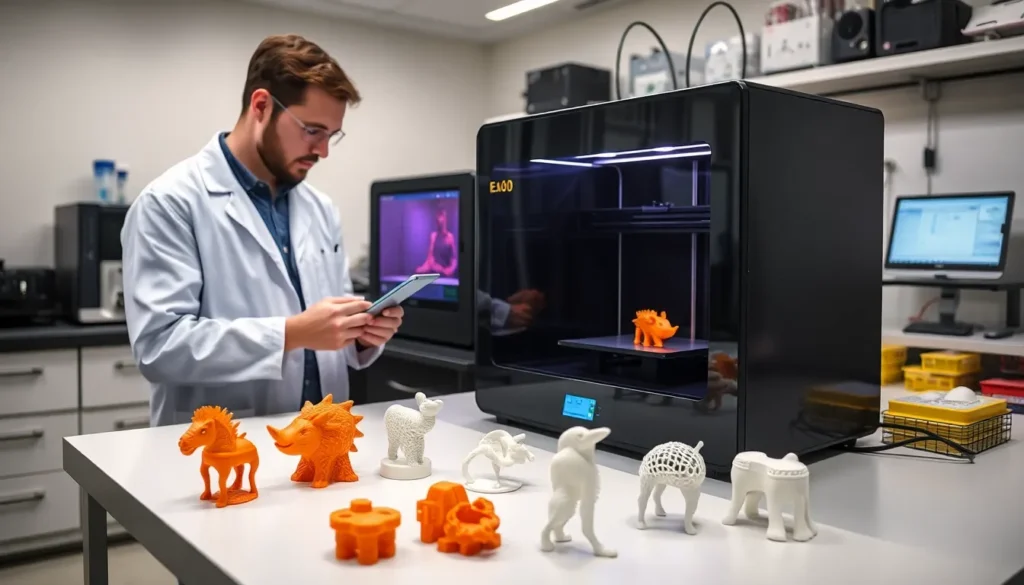Virtual reality programming is transforming the way developers create immersive experiences. As technology advances, VR has become a powerful tool for gaming, training, and education, captivating users like never before. With the ability to transport individuals into entirely new worlds, the demand for skilled VR programmers is skyrocketing.
In this dynamic field, programmers harness a variety of languages and frameworks to build engaging virtual environments. From 3D modeling to interactive storytelling, the possibilities are endless. Understanding the fundamentals of VR programming not only opens doors to innovative projects but also places developers at the forefront of a rapidly evolving industry. As virtual reality continues to shape the future, mastering its programming intricacies is essential for anyone looking to make their mark.
Table of Contents
ToggleOverview of Virtual Reality Programming
Virtual reality programming involves creating interactive, immersive environments that simulate the real world or create entirely new experiences. It incorporates various programming languages and tools to develop these spaces, ensuring they are engaging and realistic. Commonly used languages include C#, C++, and JavaScript, with frameworks such as Unity and Unreal Engine providing essential support for VR development.
Virtual reality applications span multiple sectors. In gaming, it enhances user interactions and gameplay through rich, three-dimensional environments. In training, it offers realistic simulations for skills development in fields like medicine and aviation. In education, it enables experiential learning, giving students the opportunity to explore concepts in a more interactive manner.
Developers should focus on key programming aspects. Graphics programming is crucial for rendering lifelike visuals and smooth animations. Interaction programming allows users to engage with the virtual environment effectively. Physics programming simulates real-world behaviors, enhancing realism and immersion. Familiarity with user experience principles ensures the design is intuitive and accessible.
Ongoing advancements in technology drive the evolution of VR programming. Emerging tools and platforms expand opportunities for creating sophisticated virtual experiences. Staying updated with the latest trends and techniques positions developers to innovate within this dynamic landscape, making VR programming a vital skill for tech professionals aiming to lead in this field.
Key Technologies in Virtual Reality Programming

Key technologies drive advancements in virtual reality programming, enabling developers to create immersive experiences. Understanding these technologies is vital for effective VR development.
Virtual Reality Headsets
Virtual reality headsets serve as the primary interface for users, providing an immersive environment. Leading models include the Oculus Quest, HTC Vive, and PlayStation VR. These devices incorporate high-resolution displays, built-in sensors, and motion tracking capabilities. They enhance the user’s experience by allowing natural movements and interactions within the virtual space. Developers often optimize applications for specific headset capabilities, ensuring smooth performance and engaging experiences.
Software Development Kits (SDKs)
Software development kits (SDKs) provide developers with tools and resources to streamline VR application creation. Popular SDKs include Unity XR Toolkit, Unreal Engine VR Template, and OpenXR. These frameworks offer essential libraries for rendering, input handling, and user interface design. Using SDKs accelerates development time by offering pre-built functionalities and simplifying access to advanced features, like spatial audio and physics simulation. Developers can leverage SDKs to ensure compatibility across various VR headsets, optimizing user experience in diverse environments.
Popular Programming Languages for Virtual Reality
Several programming languages are prevalent in virtual reality (VR) development, each offering unique strengths for creating immersive experiences.
C#
C# is widely used in VR programming, particularly with the Unity game engine. It’s known for its simplicity and readability, making it accessible for beginners. C# provides robust support for object-oriented programming, essential for managing complex VR interactions and environments. Developers can leverage features such as the Unity API to create responsive and interactive VR applications efficiently. Additionally, C#’s extensive libraries facilitate rapid prototyping and deployment of VR projects.
C++
C++ plays a crucial role in VR programming, especially in performance-critical applications. Its high efficiency and control over system resources make it the preferred choice for developers working with the Unreal Engine. C++ allows for fine-tuning graphics and physics computations, essential for creating realistic simulations. The language’s object-oriented features enhance code organization, which is vital for large-scale VR projects. Additionally, C++ provides direct access to hardware, improving performance for demanding VR experiences.
JavaScript
JavaScript is increasingly popular for web-based VR applications, particularly through frameworks like A-Frame and Three.js. Its versatility enables developers to create immersive experiences that run directly in web browsers without requiring additional plugins. JavaScript’s integration with HTML and CSS allows for a seamless blend of traditional web design with VR elements. As the web becomes a more significant platform for VR, JavaScript skills are valuable for creating accessible and interactive virtual experiences.
Applications of Virtual Reality Programming
Virtual reality programming finds extensive applications across various sectors, including gaming, education, training, and healthcare, enhancing user experiences and performance outcomes.
Gaming
Virtual reality programming revolutionizes the gaming industry by creating immersive environments that engage players on a deeper level. Developers use languages like C# and C++ to design realistic graphics and interactive gameplay. Popular VR games, such as “Beat Saber” and “Half-Life: Alyx,” showcase the potential of VR through detailed environments and intuitive controls. Moreover, game engines like Unity and Unreal Engine facilitate the development process, allowing for innovative gameplay mechanics and compelling narratives. This sector continually evolves, incorporating user feedback and emerging technologies, resulting in richer gaming experiences.
Education and Training
Virtual reality programming enhances education and training by providing immersive learning experiences that promote retention and engagement. Developers utilize VR to create simulations that replicate real-world scenarios, such as virtual classrooms and field training environments. For example, medical students can practice surgeries in a risk-free setting using VR simulations, while companies simulate workplace scenarios for employee training. These applications not only improve skill acquisition but also foster collaboration through shared virtual spaces. Educational institutions increasingly adopt VR technology to enrich curricula, ensuring students benefit from experiential learning.
Healthcare
Virtual reality programming plays a pivotal role in the healthcare sector by transforming patient care, training, and therapy. Developers create VR applications for medical training, allowing practitioners to refine skills through lifelike simulations. For example, trauma surgeons practice complex procedures in a controlled, virtual space. Additionally, VR therapy aids patients in managing pain, phobias, and anxiety disorders through exposure therapy. Research indicates that VR interventions can reduce pain by distracting patients during painful procedures. As VR technology continues to evolve, its integration into healthcare systems enhances both practitioner training and patient outcomes.
Future Trends in Virtual Reality Programming
Future trends in virtual reality (VR) programming highlight several key advancements that will shape the industry’s growth. Enhanced realism in virtual environments is a primary focus, with developers leveraging improved rendering techniques and hardware capabilities to create lifelike graphics. As hardware evolves, VR experiences will become more immersive, drawing users into interactive worlds.
Increased integration of artificial intelligence (AI) will further revolutionize VR programming. AI will enable more sophisticated non-playable characters and dynamic environments that adapt to user actions. This shift will lead to more personalized and engaging user experiences, transforming gameplay and training simulations.
Another significant trend is the rise of social VR platforms. These platforms facilitate collaborative experiences, allowing users to interact and communicate in shared virtual spaces. As social connections become more critical in the digital age, developers will focus on creating seamless and interactive environments that enhance user engagement and community building.
The evolution of augmented reality (AR) integration into VR applications will also play a role in future programming trends. Hybrid experiences that blend VR and AR offer users unique interactions with both real and virtual elements. This integration will find applications in training, gaming, and education, providing more versatile user experiences.
Moreover, advancements in haptic technology are set to enhance tactile feedback in VR. Developers will utilize this technology to create realistic sensations, improving immersion through touch. Users will feel a sense of presence and interaction with virtual objects, making experiences more engaging and authentic.
Additionally, the push for cross-platform compatibility will continue to grow. Developers will prioritize creating applications that function seamlessly across various devices and platforms, including VR headsets, gaming consoles, and mobile devices. This trend aims to broaden the audience for VR experiences, making them accessible to more users.
Sustainability in technology will also influence future VR programming. Developers will increasingly focus on optimizing code and resources to reduce the environmental impact of VR applications. This emphasis on sustainability will become an essential consideration in the design and development process.
Staying informed on these trends provides developers with valuable insights needed to innovate and succeed within the evolving landscape of virtual reality programming. Embracing these advancements ensures they remain competitive and capable of delivering cutting-edge experiences in this dynamic field.
Virtual reality programming stands at the forefront of technological innovation. As it continues to reshape various industries, the demand for skilled developers is only set to grow. Mastery of programming languages and frameworks is crucial for those looking to thrive in this dynamic field.
With advancements in technology driving new possibilities, staying updated with trends will empower developers to create even more immersive experiences. The future of VR programming promises exciting opportunities, making it an ideal time for aspiring programmers to dive into this captivating realm. Embracing these challenges will not only enhance personal skills but also contribute to the evolution of virtual reality itself.













